|
Table of Contents (chapters downloadable in pdf format) |
||
| Preliminary Pages | Introduction etc. | Chapter 1 |
| Chapter 2 | Chapter 3 | Chapter 4 |
| Chapter 5 | Chapter 6 | Chapter 7 |
| Chapter 8 | Chapter 9 | Chapter 10 |
| Chapter 11 | Chapter 12 | Chapter 13 |
Prof. C.L. Sapru
A dedicated teacher, an authority on cultural history of Kashmir, a journalist and a well-known social activist, Professor Sapru has many firsts to his credit.
He received his early non-formal education from his father Pandit Tarachand Sapru, a well known educationist who was one of the first graduates of Jammu and Kashmir state. His prominent students include Sheikh Mohammad Abdullah and T.N. Koul (former diplomat and foreign secretary).
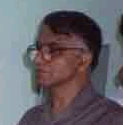
Professor Sapru graduated from earstwhile J&K University, did post-graduation from Punjab University at Solan. He has distinction of being the first graduate Hindi language and literature from the earstwhile Kendriya Hindi Mahavidyalaya, Agra, now known as Central Hindi Institute. He has also the distinction of being the first Hindi lecturer in J&K state where Hindi was introduced as one of the elective subjects in the Colleges, through his untiring struggle. He led a delegation to the Official Language Commission headed by B.G. Kher in 1956 and got Hindi recognized at various levels in the State. Through his efforts he got National Hindi News bulletin relayed from Srinagar station A.I.R. also.
Professor Sapru has the credit of starting and editing the first Hindi monthly magazine Kashyap published after independence in 1959 and later starting a quarterly Hindi journal Satisar from Kashmir.
He has encouraged and guided many Hindi scholars and writers of modern generation in Kashmir. The first Hindi post-graduate of Ladakh and presently the Principal of Govt. Degree College, Leh, Dr. Dorjey Tswang and the first Kashmiri-speaking Muslim post-graduate Hindi officer at Doordarshan Kendra, Srinagar, now a correspondent of BBC Abdal ahamed Mehjur (grandson of great Kashmiri poet Mehjoor), were taught by him and persuaded to qualify for the post-graduation degree in Hindi language and literature.
Well-known short story writer Dr. H.K. Koul has rightly called him as Mahaveer Prasad Diwedi of Kashmir for his pioneering work in the propagation and development of Hindi and Kashmiri language in the Kashmir Valley. He guided 40 Rashtra Bhasha centers, wherefrom more than 38000 Kashmiri-speaking Muslim candidates learnt Hindi and appeared in various Hindi examinations conducted by the Rashtra Bhasha Prachar Samiti Wardha founded by Mahatma Gandhi since 1956.
Professor Sapru organized historic National function/seminars such as Vivekananda Birth centenary (1963), Prem Chand Birth centenary (1980) and Sher-i-Kashmir S.M. Abdullah National Seminar in Kashmir.
Apart from contributing to the literary movement in the valley, he is involved in the various educational activities. He became first youngest elected member to the earstwhile J&K University Senate in 1959, is member of Kashmir Women’s welfare trust founded under the inspiration and guidance of Dr. Annie Besant, which runs two premier Girls Institutions Vasanta and Kashyapagirls High Schools in the valley. Besides a member of Hindi Shiksha Samiti, G.O.I. he has been a member of the Hindi advisory comities of Ministry of Defence, Steel & Health.
Author of eighteen books notable are SANTOOR-KE-SWAR, KESAR-AUR-KAMAL & RAMAKRISHNA KATHA AMRYATH, etc. Professor Sapru is recipient of many State as well as National Awards and Honours, notable among these areSauharda Samman (U.P. Govt), Best Book Award M.O.H.R.D from Govt. of India & J&K. State Academy of Art, Culture and languages, and Hindi Academy of Govt. of Delhi. Etc.
After exodus from Srinagar, where he served as Professor and H.O.D. as well as Principal Govt. Degree College at Baramulla, he headed department of Hindi Govt. Camp College (University of Kashmir) at Jammu. After retirement, besides his research work on Kashmiriology, he remained actively involved in media. He remained advisor to the popular weekly tele-magazine --- “KASHMIR FILE”. Presently he is an honorary editor of a widely circulated monthly socio-cultural journal Koshur Samachar from Delhi.
Prof. Sapru is founder secretary of Ramakrishna Ashrama, Srinagar and presently member managing committee Ramakrishna Mission, New Delhi. He was also member of the Jammu and Kashmir Dharmarth Trust founded by Maharaja Gulab Singh.
Articles
Pilgrim Spots of Kashmir
By Prof. Chaman Lal Sapru
Glimpses of Kashmiri Culture Published by: Shri Parmananda Research Institute (REGD.) (under the auspices of Shri Rupa Devi Sharada Peetha Trust) Raghunath Mandir, 2/3 Bridge, Srinagar, Kashmir
Sanskrit Shloka says that almost all the pilgrimages of the World are also found in Kashmir, such as the holy Ganga and the Prayaga.
Every Hindu considers it his duty to immerse the ashes of his deceased ancestors in the Ganga. In Kashmir we give the same preference to Gangabal as is given to the Ganga in holy scriptures. The same is true about the prayaga at Allahabad where the Ganga, the Yamuna and the invisible Saraswati meet and our Prayaga at Shadipur which is the 'Sangam' of Kashmir's two important rivers the Vitasta, and the Sindhu. Every Hindu who offers prayers according to Sanatana traditions, worships God in the form of PANCHAYATAN. The Panchayatan comprises the following deities-Ganesha, Shiva, Vishnu, Devi and Surya. We have temples and Teerthas attributed to the above mentioned gods and also dedicated to Avatar like Shri Rama.
GANESHA
Ganesha is worshipped as the Aadi Deva (The First Deity). Ganesha is the son of Sankara or Shiva. Every Hindu starts his worship with obeisance to Lord Ganesha. Ganesha is considered as the Siddhidata (the, boon-giver) and Vighnaharta (destroyer of obstacles). In Srinagar we have a prominent temple of Ganesha in the heart of the city. The temple previously under the management of the Dharmarth Trust, is now managed by a local managing committee. An annual festival on Vaisakha Shukla Chaturdashi is held in the premises of the temple and a Mahayajna by the Brahman Maha Mandal is performed on the Brahma Jayanti day. There is a legend that during the atrocities committed by Pathan rulers, several hundred years back, the original idol of Lord Ganesha was submerged in the Vitasta by the Pandits to save it from desecration. During the Dogra rule the idol was reclaimed by the devotees and installed on the Vaisaka Shukla Chaturdashi in the temple.
This particular idol is placed in the outer temple by the side of the Siva Lingam and two bigger and more attractive idols, most probably donated by Dogra rulers, are also installed in the main temple.
There is another important temple of Lord Ganesha at the foot of the hillock of Hari Parbat which every Hindu considers it his sacred duty to go round every day. Lord Ganesha's temple is the first amongst the shrines strewn on this hillock.
Even the holy pilgrimage to Sri Amarnathji starts with the worship of Sri Ganesha at Ganeshabal near Pahalgam.
SANKARA OR SIVA:
There is hardly any place of Worship in Kashmir, where you will not find a Siva Lingam. In the world-famous cave of SWAMI AMARNATHJI an ice Lingam is formed to full size on the fifteenth of the bright half of every month, (Poornima), hence is of reverential attraction to the devotees of all faiths. This holy place is visited on the Shravana Poornima every year by thousands of pilgrims from far off places. The Pilgrimage starts from the Dashnami Akhara of Srinagar in the form of a procession. The Mahant carries the holy silver mace of Lord Siva and is followed by hundreds of Sadhus reaching the cave on the Shravana Poornima, which coincides with Raksha-Bandhan.
People like Aadi Shankaracharya, Swami Vivekananda and Swami Ramtirtha have visited this place. Swami Ramtirtha has composed beautiful verses in praise of the mysteries of the Lord. Swami Vivekananda says to his European disciples, "The image was the Lord Himself. It was all worship there. I never have been to anything so beautiful, so inspiring.
SANKARACHARYA TEMPLE
A beautiful stone-temple of Lord Shiva is situated on a hill in the Srinagar city commanding a magnificent view. The temple is managed by the Dharmartha Trust. It is believed that the first Sankaracharya on his visit to Srinagar, meditated on this spot. Swami Vivekananda has given the following description of the temple:- "Look ! what genius the Hindu shows in placing his temples ! He always chooses a grand scenic effect. See ! the temple commands the whole of Kashmir."
The snow-clad peaks round the valley bear one or the other name of Lord Shiva You have "Mahadeva", "Harmukha", etc. Under the Mahadeva peak in the picturesque range of Harwan, the famous Siva-Sutras (the base of Shaiva Philosophy) were composed. Devotees visit this place particularly on the same day on which the pilgrimage to Amarnathji is undertaken. They also visit the following places of worship connected with Shiva on the same day. Dhyaneshwar in Bandipur, Thajwor in Bijbehara and Harishwar in Khonmoh.
There are numerous temples of Shiva in the whole valley. Sadashiva temple in Purushyar and Someshwar temple in Habba- Kadal find the description in the famous histories and Puranas of Kashmir.
THE VISHNU PADA:
The only holy place connected with Lord Vishnu in Kashmir is Vishnu-Pads or Kaunsar Naga. This is a big lake situated at a height of more than 14,000 feet in Anantnag district. The lake is shaped as a foot and it is believed that Lord Vishnu had placed his holy foot in the place where the present big lake was formed.
THE DEVI ( DIVINE MOTHER ):
We have numerous places of pilgrimages attributed to the Goddess in Kashmir of which the Kheer Bhawani, Shri Sharika Mandir, Mahakali Mandir ( Srinagar and Vadora ), Jwala Mukhi ( Khrew ), Shailaputri (Nagabal, Baramulla), Baladevi, Sri Vaishnodevi and Sarthal Devi (last two in Jammu region) are well koown.
KSHEER BHAWANI:
The temple of Goddess Maharajni, known as Ksheer-Bhawani, is situated about 14 miles away from Srinagar at village Tulamula in the famous Sindh valley. The road leading to Ksheer Bhawani has also spiritual significance. J. Krishna Murti in his booklet "At the feet of the Master" writes about the following four "Sadhanas" to achieve realization. They are Viveka (Discrimination), Vairagya (renunciation), Sadachar (righteousness) and Prema or Mumukshaa (the eternal love). While going to Ksheer Bhawani one comes across the places bearing the same name. First we reach 'Vicharnaga.' Vichar is synonym of 'Viveka'. Then we reach 'Tyangal-bal' (the hill of burning charcoals) and Kavaj-var (the fire of cremation ground) and Amarher (the immortal staircase). These two names also denote the feeling of renunciation. The third place is Aanchar Lake, which derives its origin from Aachar (the righteousness). After going through these places we reach the cherished destination, the holy place of the Divine Mother and one is all love pure and divine with the Divine Mother.
An old Sanskrit text called the 'Bringesha Samhita' carries a chapter known as 'Rajny-Pradurbhava' and the Pauranic description of the said Teertha is given in the said book. The demon-king of Lanka (Ravana) in order to attain unlimited power worshipped Mother Maharajni. The Divine Mother, after being moved by the immense 'tapas' (penance) performed by Ravana, bestowed upon him many boons.
Soon after, Ravana began to lead a life of luxury and after forcibly taking away Sita, prepared himself for a battle with Lord Rama. After watching the misbehaviour of Ravana, the Devi asked Hanumana to take Her to Satisar (Kashmir) along with 360 Nagas.
Hanumanji installed the Devi at Tulamula village in Kashmir Valley. Here the Devi is being remembered as 'Ksheer-Bhawani' or Goddess Rajna. The Devi began to be worshiped with flowers and offerings of milk and sweets only.
The Brahmins of Tulamula have been described in Rajatarangini as full with spiritual powers.
For quite some time in the past this important Teertha remained under flood waters and it was only after a pious Brahmin Shri Krishna Pandit had a vision that the place was rediscovered. He was a great devotee of the Devi and composed the famous Rajna Stotra.
A beautiful marble temple has been erected in the centre of the 'Kunda' (spring) by Dogra rulers. This spring changes colours and is shaped as "OM" in Sharada script. Every year an annual festival is held on Jyeshtha Shukla Ashtami at this holy place. Swami Vivekananda and many others have performed Tapas at this holy place and had visions.
SUN TEMPLE AT MARTAND:
Only five miles away from the town of Anantnag is a village known as Mattan or Bhawan. In ancient scriptures the name of this place is given as Martand (the sun). Here is a beautiful spring and a small rivulet flowing nearby known as the Chaka. On the banks of the Chaka thousands of devotee; from northern India perform Shradhas to their deceased ancestors on Adhikmasa months on Vijaya Saptami. About 2.5 km. from the spring are ruins of a magnificent temple known as Martand. The temple in Indo-Greak architectural style was built by the great emperor Lalitaditya.
OTHER SHRINES:
The two prominent places of pilgrimages of Muslims and Sikhs are Hazratbal and Chhatipadshahi. The Hazratbal shrine on the Dal lake facing east is know as the second Mecca. The holy relic of Prophet Muhammad is preserved here. The Chhati Padshahi is a Gurdwara near Hari Parbat which had been visited by the sixth Guru of the Sikhs.
Besides the above mentioned places of pilgrimages there are hundreds of holy places found in Kashmir. A brief description of these places is given below:
DISTRICT ANANRNAG:
AMARNATH:
This is the holy cave in which the ice-lingam of Lord Siva is formed changing its size with the waning and waxing of the moon.
VETHA - VATUR
(Vitasta-tatra) : Here is the source of river Vitasta. Annual pilgrimage to this place is performed on the thirteenth day of the dark half of the Bhadra month.
KHANA BARNI:
Dedicated to Divine mother, it is near Qazigund.
KAPAL MOCHAN:
Annual festival on Sravana Shukla Dwadashi is held here and devotees perform shradha of teenagers. it is situated near Shopian.
MANZGAM:
A temple in the forests is dedicated to Mother Rajna. Annual festival is held on Jyeshtha Ashtami.
PROPER ANANTNAG:
A holy spring after which the town as well as the district is named is famons for its crystal clear water. Annual festival of Ananta Devata is held on the fourteenth day of the dark half of Bhadra month.
THAJIWORE:
It is situated near Bijbihara. An old Shiva temple is found here and the annual festival is held on Sravana Poornima.
GAUTAMA NAGA:
It is situated about 4.5 kms. away from Anantnag.
LOKABHAWAN:
Annual festival is held here and a Mahayajna performed. It is 11 miles from Anantnag.
UMA NAGARI:
A temple and a spring of Goddess Uma is found here. Annual Mahayajna is performed here.
NAGADANDI:
Sri Ramakrishra Maha sammelan managed by Vivekananda Rock Memorial Committee Kanyakumari, is situated here. An ancient spring and a few idols of some ancient temple are found here. Annual festival is held here on the day Chhari (Amarnath Yatra) starts. It is 3 km. away from Achhabal.
GOSAYEEN GOND:
An attractive neat and clean Ashram is found here. During Amarnath Yatra a number of devotees visit this Ashrama and stay and mediate for a few days.
VISHNU PAD:
Known also as Kaunsarnaga. It is about 14 miles away from Aharbal fall. It is a hazardous journey.
JWALA MUKHI:
This Teertha attributed to Goddess Jwala is situated about 20 kms. from Srinagar in Anantnag district. A temple of Jawalaji is situated on a hillock there. Annual festival is held on "Jwala Chaturdasi" (fourteen day of the dark second half of Asharh).
KURUKSHETRA:
It is near Pampore (famous for saffron, where famous mystic Poetess Lalleshwari or Lal ded lived). Festivals are held here on the occasions of solar and lunar eclipses.
BALADEVI:
This famous Teertha is attributed to Bala Bhagwati. She is considered to be the 'Istadevi' (presiding deity) of the Dogra rulers, hence the Teertha is managed by the Dharmarth Trust. This place of pilgrimage is situated in Balahama near Pampur.
DISTRICT BARAMULLA:
KOTI TEERTHA:
It is situated on the right bank of the Vitasta at Baramulla. It is believed that the holy water of one crore of teerthas reaches here through Vitasta and therefore is very sacred.
SHAILAPUTRI (Devibal):
This Teertha is situated on the left bank of the Vitasta at Baramulla. This is a miniature Ksheer-Bhawani.
NANDKESHWAR (Seer-Jagir):
A famous place of Nandakeshwar Bhairava situated on the left bank of the Vitasta at Sopore. The annual festival is held on Jyeshtha Amavasya here.
NANDKESAWAR (Sumbal):
A place for worship of Nandakeshwar Bhairava situated in Sumbal village. GOPHABAL: Situated near Langet, Handwara.
BHADRAKALI:
The Teertha attributed to Goddess Kali is situated in a thick pine forest near Vadipora (Handwara).
TAKAR (Gushi):
Situated near Kupwara this teertha attributed to the Divine Mother (Maharajna) is found here.
CHANDIGAM:
Situated in the picturesque valley of Lolab in Sogam, a Niranjani Akhara is established here.
GOSAYEEN TENG:
Situated on a hillock at Baramulla. Some springs attributed to Bhagwan Ramchandra are found here.
SHARADA JI:
It (now in Pakistan-occupied Kashmir) is situated on the bank of Kishanganga famous throughout the country before partition. This is considered as a "Siddha Peetha" like Sharika Chakreshwar temple at Hari Parbat. It was a place of learning also and students as well as scholars from far off places used to come here. Some monuments still exist there.
DISTRICT SRINAGAR:
SHANKARACHARYA:
A beautiful Shiva temple exists on the hillock called shankaracharya hill. Annual festival on the day of Amarnath Darshan is held here.
HARI PARBAT:
A hillock in Srinagar city, it has many temples around it. The main temple is of Goddess Sharika, the presiding deity of Kashmir. Annual festival on the first Navratra & Ashadh Navami is held here. This is considered as a 'Siddha Peetha'.
KSHEERABHAWANI:
Twenty kilometres away from Srinagar a spring in which a temple is constructed dedicated to Mother Rajna. Annual festival held on Jyeshta Ashtami.
GANGABAL:
A lake situated near Harmakh peak is the most beautiful lake of Kashmir. Annual Yatra is held on the Ganga Ashtami in Bhadra month. People immerse the ashes of their deceased there and also perform Shradha. The journey is most hazardous but much rewarding.
GUPTAGANGA (Nishat):
Just adjacent to Nishat garden is situated the GuptaGanga. On the Baishakhi festival devotees from all over Kashmir have a dip in the spring here. A Shaiva Mathika is also attached to it where Sunday classes on Shaivism were conducted by Shaivacharya Swami Lakshman Joo.
JYESHTESHWARA:
A temple attributed to Jyeshtha Devi is located in between Shankaracharya and Chasma Shahi. A pilgrimage to this place on thursdays of Jyeshtha is considered auspicious.
GANGAJATAN:
Situated in tehsil Badgam; on Ganga Ashtami day people go there and have a dip there. It is almost a dry spring but on this particular day at a particular hour water gushes out and devotees have their holy bath.
BADIPUR:
Situated in tehsil Chadura near Nagam, it is a miniature Ksheer Bhawani. Annual Mahayajna on Vaishakha Shukla Ashtami is held here.
MAHAKALI ASTHAPAN:
Situated by the side of famous Khanaqah of Shah Hamdan; it is believed that a magnificient temple of Mahakali existed here. The annual festival is held here on Pausa Krishan Paksha Ashtami.
VASKUR:
Dedicated to a mystic poetess Roopa Bhawani, considered to be an incarnation of Goddess Sharika; Annual festival is held here on Sahib-Saptami.
VICHAR NAG:
Situated on Srinagar-Leh Highway at a distance of about 10 kms from Srinagar, the annual festival is held on the last day of the Kashmiri calender i. e. Chaitra Amavasya. The famous Kashmiri Pandit-Shirya Bhat-responsible for the change of heart of Sultan Zainulabidin, later known as Budshah (the Great Monarch), also lived here.
JAMMU:
VAISHNO DEVI:
It is as famous as Amarnathji or Ktheer-Bhawani in Kashmir. Thousands of Pilgrims mostly from northern India visit this place. Divine Mother in Vaishnavee form is being worshipped here. The main temple is 11 kms. above Katra, a town on Jammu-Srinagar National Highway. Devotees prefer to visit the shrine on Nava-Ratra Days.
SARTHAL DEVI:
It is situated in Doda district of Kishtwar. There is a popular belief that mother Sharika (Hari Parbat) shifts during winter to this place. There are other places of pilgrimages in Jammu region also such a Burha Amarnath, Sudh Mahdev, etc.
Pushkar Bhan
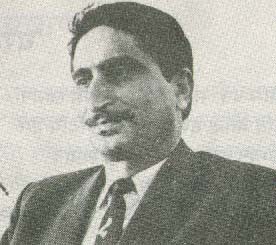
Padamshree Pushkar Bhan
Padamshree Pushkar Bhan
The Luminary Humorist
Written by: Chaman Lal Sapru for Koshur Samachar
Translated by: Lalita Pandit
It would be hard to find a person of Kashmiri origin who is not familiar with the name of Pushkar Bhan. For Kashmiris in Kashmir, and all around the world, the genres of Humor-Laughter-Entertainment and Pushkar Bhan's name have become synonymous. For 3 consecutive years, the Srinagar Station of Akashvani broadcasted his Asun te Gindun (Laughter And Play) and Poshe Goindi (Bouquets of Flowers). Akashvani also broadcasted his socially conscious family show, Niza Saheb for 9 years. Added to these were the 11 years of the most popular show Zoon Dab (The Moon Oriele), broadcasted daily at 11:00 a.m. for 6 days a week for 8 years. This Serial became known throughout the world as the Most Outstanding Serial. It addressed, and resolved in its own terms, many social and economic issues of the time. In1974, Pushkar Bhan was awarded the coveted Padamshree Prize for his script writing of all episodes of Zoon Dab and forplaying the role of the main character, Mama.
Endowed with a charismatic personality, Pushkar Bhan was born in Srinagar in 1926. Right from his childhood, he demonstrated interest in becoming a playwright and an actor. After receiving his Bachelor's degree in 1947, the year of India's independence from British rule, Pushkar Bhan became associated with the Cultural Forum of the National Cultural Front, and, in this capacity, acquired unprecedented acclaim under the leadership of Dinanath Nadim, the foremost luminary of new cultural awareness in Kashmir. Pushkar's plays, Lalkar (in Urdu) and his Ya Tan Ya Tadakh received captive public attention. His acting roles in Nadim 's Bombur Yamburzol, also in Shahid Sherwani and Yeh Kashmir Hai, and many others, won high praise from audiences everywhere. In 1956, a special performance of Bomber Yamburzol was staged in Srinagar's Needoz Hotel when the special guest was none other than the then Prime Minister of Russia, Kruschov. So mesmerizing was Pushkar's unparalleled playing of the lead role of Harud (Sharat), that Kruschov stepped onto the stage to offer his personal greetings to Pushkar Bhan.
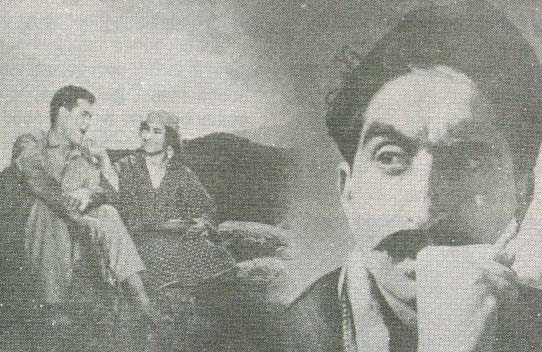
In the Kashmiri movie Myanzirath (Mehindirat)
Due to financial difficulties in 1949, Pushkar decided to move to Mumbai where he found a petty job at Modern Mills Limited. In spite of a daily work schedule, he did not stay away from his first love, acting. He earned a living and linked himself up with the Indian People's Theater Association (I.P.T.A). After a day's job at the Mills, he would work at the IPTA. In two months he was elected representative of the Urdu section of this multi-lingual Institution. Unfortunately, in 1953 some domestic troubles back home in Kashmir forced him to return to Srinagar, and leave Mumbai.
Once back in Srinagar, he was hired by the Akashvani Station of Kashmir, Srinagar, at daily wages, with a remuneration of Rs.2:50 per day. He reacted to this set back as if it was a gift, or a challenge, rather than a curse. Having reached this point, Pushkar never looked back. Instead, he continually moved forward and by 1985 he was promoted to the position of Senior Producer. Due to his outstanding achievements and successes, he was appointed as Producer Emeritus in 1988-1991.
In addition to the Padamshree award in 1974, Pushkar won other notable awards, Sahitya Akademy Award in 1976, NEETA (I.C.C.E) in 1985. Jammu and Kashmir State's Academy of Art and Literature honored Pushkar Bhan with awards for his plays Chapath (Thapad or The Slap), Nev Nosh (Nai Bahu or The New Daughter-in-Law), and Bhavya Purvabhyas (The Grand Rehearsal). In addition, he has had the distinction of winning the Sadiq Memorial Award for Best Actor and Best Playwright.
Pushkar Bhan's distinctive and undying fame rests on the lead roles he played in Myanzirath and Shayire-Azam Mahjoor. In the second of these two major films, Pushkar had the distinction of working with famous Indian actors like Balraj Sahni and Parikshit Sahni. The film based on the life of the Kashmiri poet, Mahjoor, won the President of India's Gold Medal for its excellence.
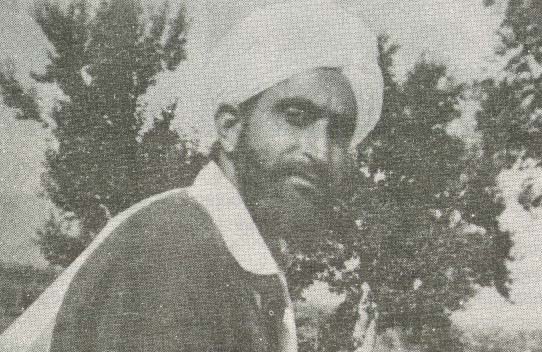
In the film Shayir-e-Mahjoor
After his retirement from government jobs, and acting, Pushakar took up writing as a dedicated pursuit rather than a post retirement hobby. His writings have continuously appeared in various journals such as Inklab (The Revolution), Aieena (The Mirror), both published in Mumbai, as well asSheeraza and Kongposh, published in Jammu and Kashmir.
Pushkar Bhan's contributions to the genres of Satire and Humor in Kashmiri Prose Literature are immense. Not only did he originate and develop these genres in Kashmiri Language (Oral and Written), he elevated these genres to the standards of universal excellence.
His work, Machama, which won a Literary Award from the Sahitya Akademy, has been the source of 73 plays broadcasted from the Akashvani Radio's Srinagar Channel. In this highly popular Series, the main character role of Machama was played by Pushkar Bhan himself.
Another important work, Sanya Bacha (Our Children), won an award by NEETA. This work makes a significant contribution to knowledge about how Radio Broadcast Programs can aid in the education, entertainment, and learning of children.
Dalal, published by Cultural Academy Srinagar, Kashmir-Zarai Tarakki Ke Nai Rang, published by the Publication Division of the Indian Government,Vakhtuk Alav (The Call of The Times), published by the Ministry of Education, Government of India, are other notable works authored by Pushkar Bhan.
When the first Television Broadcasting Channel was established in Srinagar, Pushkar Bhan gained immense popularity among viewers for his Laughter-Satire series, Doctor Zero. His play, Inklab, received high acclaim when it was televised by the Patna Channel.
Subsequent to his departure from Srinagar (Kashmir), Pushkar Bhan lives now with his son in Patna (Bihar). In his exile, he has already written more than 30 episodes of Rangan Hyendi Rang (The Color of Many Colors), televised by the Srinagar Channel as a Serial Drama.
May Baba Amarnath grant good health to this most cherished treasure of Kashmir, Pushkar Bhan. May he live well and for an eternity give us the inspiration (to live and to work).
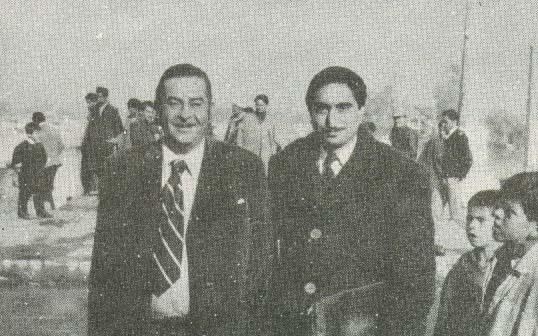
With Hindi Movie actor/director Raj Kapoor
Note: 'Padma Shree' Pushkar Bhan passes away
Excelsior Correspondent, October 6, 2008:
JAMMU, Oct 6: Legendary radio personality, writer and actor Pushkar Bhan passed away in Delhi last night. He had been ailing for the past one month and was admitted in the ICU of Rockland Hospital in New Delhi when the end came.
A homage on the Martyrdom Day 23rd June 1953
The Sacrifice Supreme
Prof. Chaman Lal Sapru
 He was ‘Shyama’ (Divine Mother’s) ‘Prasad’ born). So he remembered three times the Mother, before he left this mortal frame. First he remembered the mother who gave him birth and next he remembered the Mother India (Bharat Mata) for whose sake he sacrificed his life and lastly he remembered the Divine Mother Shyama, who embraced him and took him to his heavenly abode.
He was ‘Shyama’ (Divine Mother’s) ‘Prasad’ born). So he remembered three times the Mother, before he left this mortal frame. First he remembered the mother who gave him birth and next he remembered the Mother India (Bharat Mata) for whose sake he sacrificed his life and lastly he remembered the Divine Mother Shyama, who embraced him and took him to his heavenly abode.
I was a college student at the time Dr. S.P. Mookerjee died in mysterious circumstances in Srinagar. When the news of his death was broadcasted on the radio, hundreds of Kashmiri youth, mainly RSS, workers, assembled in Srinagar and protested against the mysterious death of the great patriot leader of the country. It was by chance I happened to meet one Kashmiri Pandit constable on night duty outside the room of Sri Maharaja Hari Singh Govt. Hospital, Srinagar, where Dr. Mookerjee was brought from the special jail (a bungalow near famous Nishat garden, converted into a sub jail). The constable told me that Dr. Sahib was quite hale and hearty but seemed to be tired and in early hours of the fatefully-day he felt uneasy and called me, I helped him in taking water and during the restless moments he uttered only thrice MA, MA, MA (Mother, Mother, Mother) and later fell down and became unconscious. We attendants rushed to the nearby emergency room and informed medical attendants about the condition of Dr. Sahib who after examining him whispered among themselves. We could understand that Dr. Sahib was dead. Here I may add that a Hindu nurse attending Dr. Syama Prasad Mookerjee mentioned later that a wrong injection was given to him which proved fatal.
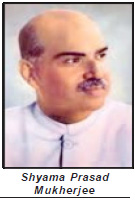
Dr. Mookerjee was a staunch believer in a united and powerful India. He was shocked to see his motherland divided on two-nation theory and how could he allow the designs of the Imperialists to see Kashmir, the crown of our ancient lands being snatched away through the agents of Imperialists. I had the privilege of hearing the arguments of his counsel. Barrister U.M. Trivedi, in the J&K High Court presided over by Justice Jia Lal Kilam, The crux of the argument of Shri U.M. Trivedi was that the Constitution of India defines the legal territory of the country and J&K State is an integral part of India. Any citizen of the country can move freely from any corner of India to any part of this ancient country. So why restrictions to the entry to the State and why a permit system.
I heard prominent lawyers commenting during the two days argument on the detention of Dr. S.P. Mookerjee under habeas-corpus that Doctor Sahib will be free and Hon’ble court will issue the order for his unconditional release. But nature had something else in store and Dr. Mookerjee was to be released by the Almighty from his physical bonds next day.
Dr. Mookerjee’s bungalow, turned into a small jail on the banks of Dal Lake, commanded an awe-inspiring look. In front of the Bungalow across the Dal Lake were visible two famous shrines named Sharika Chakreshwari on the Hari Parbat and oldest Shiva Temple on the famous Shankaracharya hill.
Dr. Sahib would gaze for hours of these two ancient Siddha Peethas of Srinagar and pray to Lord Shiva and Divine Mother. He prayed for a strong and united India.
His dete-ntion at Srinagar provided invisible strength and inspiration to us who were fighting for treatment at par of our state of Jammu and Kashmir as an integral part of the country with rest of the states.
The history will record in golden letters the supreme sacrifice made by him for the country on the Kashmir issue after Guru Teg Bahadur Maharaj who laid his precious life to save the Kashmiri Pandits from being tortured by tyrant Mughal Emperor Aurangzeb.
After Dr. Mookerjee’s martyrdom the agitation to have Ek Pradhan, Ek Vidhan and Ek Nishan gained momentum in the State, particularly in the Jammu region, under the able leadership of Pandit Prem Nath Dogra and in our Valley we too protested time and again under the dynamic leadership of Pandit Makhan Lal Aima “Harkara” and made the presence of nationalists forces felt in the Valley too. We, the hard core of youngmen, alongwith Shri Aima were arrested. But the fire kindled by the martyrdom of Dr. Mookerjee could not be suppressed by undemocratic State Government. Finally Sheikh Mohammad Abdullah was exposed and leaders like Rafi Ahmad Kidwal and Maulana Abul Kalam Azad, who were humiliated by Sheikh, compelled Prime Minister Nehru to put Sheikh behind the bars. But the Central Government did not take adequate measures to curb the anti-nationalist and separatists activities in the Valley. Jamiat-i-Islami started a planned programme of educating the young ones by starting pro-Pakistani private schools and after two decades the educated youth of the Jamiat-run schools received armed training across the border. The think tank of Iran and the Gulf as well as Saudi money poured in which strengthened the militancy and the Central Government offices in J&K as well as Kashmiri speaking (patriotic) Hindus became the soft targets and millions of them are today refugees in their own land.
It is high time to order an inquiry into the circumstances which led to the mysterious death of Dr. Syama Prasad Mookerjee and make public the finding of Kohli Commission and other inquiry commissions appointed to go into the grievances of the minority (Hindu) community of J&K State, which is at present the worst suffer even after 62 years of Independence.
The Kashmiri Hindus in particular worship Dr. Mookerjee and Guru Teg Bahadur more so in this hour of turmoil.
Krishen Joo Razdan's Bhajans
A Presentation by: Prof. Chaman Lal Sapru

Krishen Joo Razdan's Bhajans
by Prof. Chaman Lal Sapru
Book written in Devnagri Kashmiri script
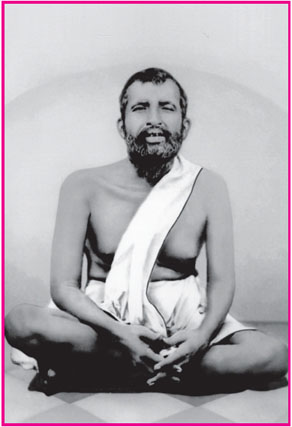



The Book released by Dr. Karan Singh.



